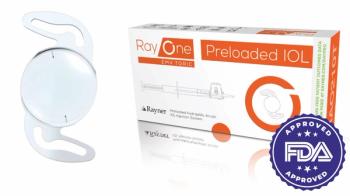
Study reveals lower vision specific quality of life in children with cortical/cerebral visual impairment
Investigators recruited children with CVI and normal controls who were between the ages of 12 months and 12 years. The children with CVI underwent a complete pediatric neuro-ophthalmologic examination.
Cortical/cerebral visual impairment (CVI), a visual processing disorder and the leading cause of visual impairment among children in developed countries is associated with markedly lower vision-specific quality of life (VS-QOL) in affected children compared to typically developing children, according to Michelle Lin, MD, from the University of California Riverside, Riverside, CA. She discussed her findings at the Association for Research in Vision and Ophthalmology annual meeting in Seattle.
She and colleagues Mark Borchert, MD, and Melinda Chang, MD, both from Children's Hospital Los Angeles, and the University of Southern California, Los Angeles, undertook a prospective cohort study to characterize the VS-QOL in children with CVI and assess the effect of clinical factors on these measures.
The investigators recruited children with CVI and normal controls who were between the ages of 12 months and 12 years. The children with CVI underwent a complete pediatric neuro-ophthalmologic examination.
During the assessment, the children’s caregivers completed the Children’s Visual Function Questionnaire (CVFQ). The scores achieved by the questionnaire were compared between the patients with CVI and the controls. The investigators sought associations between the visual acuity, strabismus, nystagmus, and optic atrophy and the CVFQ scores.
Assessment findings
A total of 43 children with CVI and 21 typically developing controls were included in this study (median respective ages, 5 and 3 years; p=0.21).
Lin reported, “All children with CVI had a developmental age less than 7 years, and all controls had a chronologic age less than 7 years (the upper age limit at which the CVFQ is validated). Children with CVI demonstrated significantly lower CVFQ scores than controls.”
Specifically, the respective total CVFQ scores for the affected children and controls were0.58±0.13 and 0.95±0.06; competence subscale scores, 0.42±0.26 and 0.96±0.08; personality subscale scores, 0.72±0.13 and 0.91±0.13; and family impact subscale score, 0.58±0.18 and 0.94±0.10) (p<0.0001 for all comparisons).
She also reported that the visual acuity, optic atrophy, and nystagmus did not significantly affect the CVFQ scores, but a history of strabismus was associated with worse CVFQ family impact subscale scores (0.52±0.16 vs. 0.69±0.19, p=0.03).
The investigators concluded that children with CVI have markedly lower VS-QOL compared to typically developing children. While the visual acuity was not significantly correlated with the VS-QOL, a history of strabismus was associated with worse VS-QOL, ie, specifically, greater impact on the family.
She stated, “Our findings highlight the profound impact of a CVI diagnosis on both the affected child and family members, and illustrate the importance of factors other than visual acuity on the VS-QOL in CVI.”
Reference
Lin M, Bochert M, Chang M. Vision-Specific Quality of Life in Children with Cortical/Cerebral Visual Impairment (CVI). Paper presented at: Association for Research in Vision and Ophthalmology annual meeting; May 5-9, 2024; Seattle, WA. Abstract number: 2147
Newsletter
Don’t miss out—get Ophthalmology Times updates on the latest clinical advancements and expert interviews, straight to your inbox.






















































.png)


